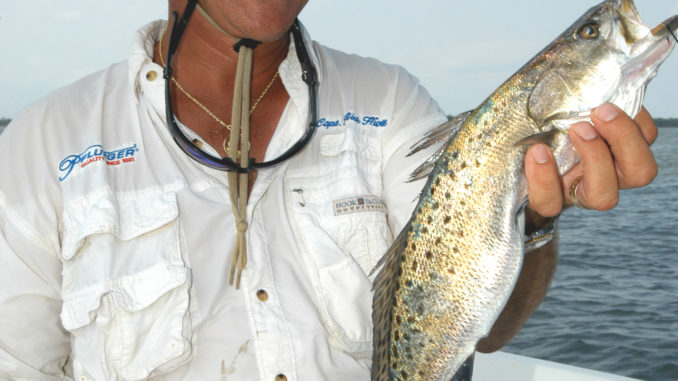
Colder than normal weather this past winter has reduced populations of two important commercial and recreational marine species, white shrimp and spotted seatrout, according to the South Carolina Department of Natural Resources.
Coastal water temperature dropped to 45 degrees or lower for eight straight days, reducing trout to below their long-term average, and killing the majority of overwintering white shrimp.
However, trout did not suffer loses as severe as those in the even colder winter of 2000-2001, according to biologists monitoring inshore fish species. Trout had rebounded since 2001, but are now below average again.
“The S.C. Department of Natural Resources will continue to closely monitor the trout population to determine whether the current trend stabilizes or reverses,” said Dr. Mike Denson.
White shrimp sampling before and after water temperatures dropped in January indicate that 80 to 90 percent have been lost. In January 2001, white shrimp plummeted to less than 5 percent of the normal population. Samples taken by the S.C. Department of Natural Resources (DNR) in March and April show similar numbers to other years when some shrimp were lost to cold, although it isn’t as bad as the severe die-off in 2001.
White shrimp that overwinter in the state’s coastal rivers, bays and sounds spawn in May and June to produce the fall white shrimp population that supports the shrimp baiting and commercial trawling fisheries.
“DNR typically opens the commercial shrimp trawling season in May to harvest the large roe shrimp, after we have determined that adequate spawning has occurred,” said Mel Bell, director of the Office of Fisheries Management. “This year the opening may be delayed, depending on what the sampling in May indicates.”
South Carolina’s second most important shrimp species, brown shrimp, spend the winter offshore and are not exposed to winter temperature extremes. They spawn earlier in the year, and juvenile brown shrimp have now moved into coastal creeks and will be caught as adults in June and July. DNR will be assessing this population in the coming months.




Be the first to comment